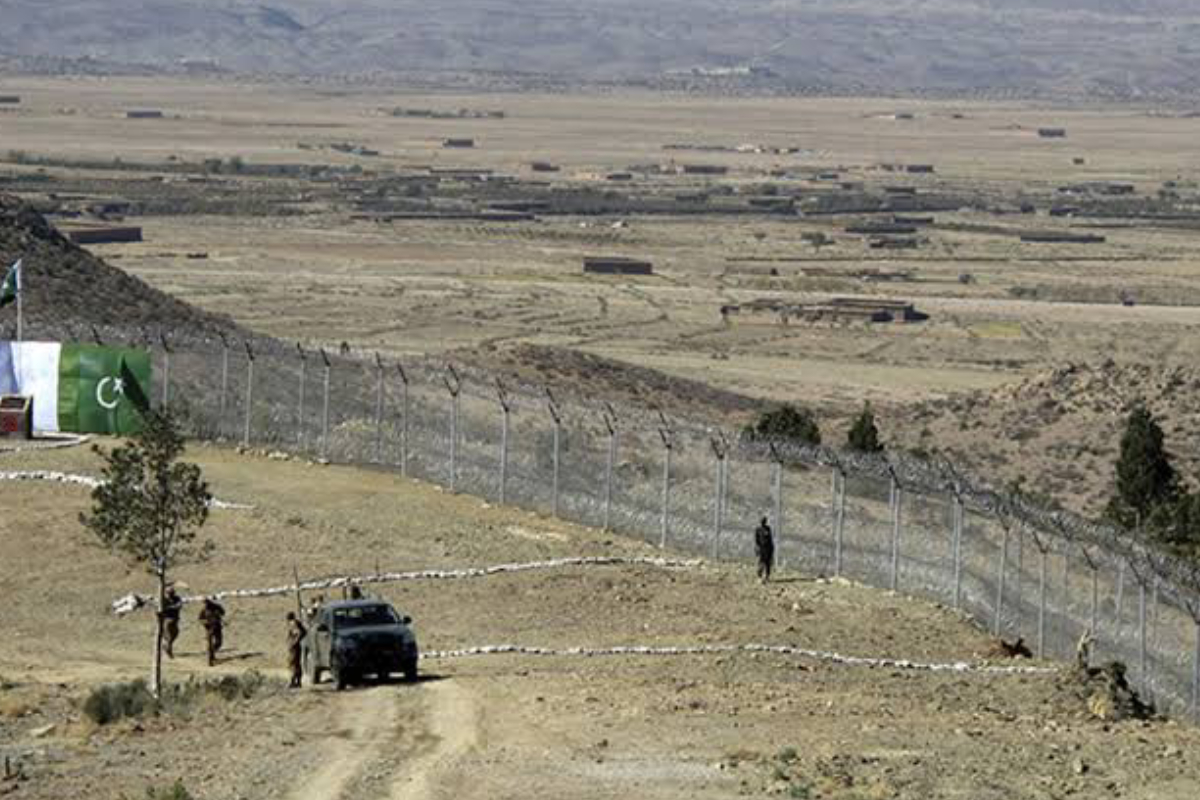

The Partition remains one of the most examined, criticised, and debated incidents in our history – a fair probability of an essay or two exists.

On occasions, I have found myself wondering about the kind of impact that India would have had geopolitically if we had access to Afghanistan and thus central Asia through the Khyber Pass. And, as is the nature of idle moments, this line of sight always leads me to think about the rationale behind the location of Pakistan. After all, Pakistan could well have been somewhere in the east, or down south, isn’t it?
So, I have asked around some. I have read some. The answers, in the shape of the Aligarh Movement, or a referendum in NWFP – have not convinced me. UP-Bihar-Bengal stretch housed the maximum number of Muslims. The only logical home for Muslims would have been a Delhi-Dhaka stretch. NWFP-Punjab, with Bachha Khan or Sikandar Hayat at the helm and with their fairly secular credentials, should have remained a part of India.
So, what happened during that period? Is the Subcontinental Partition entirely a localized solution between people of two radically different religions, or do the core reasons hide behind the Himalayas, the Hindukush, and beyond the deserts and valleys of central Asia?
But, first, let me apologise in advance. Because I walk semi-blind with this essay, without the knowledge of whether someone has already covered this angle. The Partition remains one of the most examined, criticised, and debated incidents in our history – a fair probability of an essay or two exists. My only excuse is that a couple of hours of Google search (combining different keywords and looking through the first 4-5 pages of the results) has not thrown up definitive answers. There are a few sites, sure. However, they are mostly UK or US based; their complete research works remain inaccessible (no downloadable PDF) – hiding either behind a pay wall, or a subscription fee.
ANGLO-RUSSIAN AMBITIONS
Many years ago – during the 1700s – Russia, after driving the Golden Hordes out of their territory forever, began looking at central Asia (then known as Turkestan) as their backyard. Their two hundred years of consistency in vision, one that spanned across different Czars, generals, and generations, saw them finally annex key Khanates in Turkestan like Khiva, Tashkent, Samarkand, Bukhara and Khokand.
The Brits, soon after settling down in Calcutta in 1757, acutely aware of the Russian advances, also doused themselves in a mad scramble to capture as much territory as they could. As a result, they built themselves up quite an empire in the subcontinent. This epic rivalry between the two industrial and military giants of the 19th century is commonly called The Great Game.
I would skip The Great Game for some other occasion and move towards its end. There is a place in modern-day Turkmenistan that they call Geok Depe. Translated into English, it becomes the Blue Hill. This place is fairly close to the present-day Turkmen-Afghan border.
Towards the end of the 1800s, the Russian army had taken over Geok Depe and had moved further towards Herat (in modern-day Afghanistan) by sacking a garrison town under Herat. That town was called Panjdeh.
Now technically Herat was the beginning of the Herat-Kandahar-Quetta route. That was the ‘Invade India’ highway those days. The Russians under Konstantin Kauffman were a formidable fighting force – one that was already building railroads for military supply along Turkestan.
An alarmed England initiated diplomatic movements along the length and breadth of Moscow corridors, and a quick agreement was reached. That was the time when the northern border of Afghanistan got more or less decided (Panjdeh marked the southern limit of Russian expansion in Turkestan) and, two notable wars down (Anglo-Afghan I and II Wars) – British India finally had reasons to feel secure.
It was a good deal. Did I tell you that the first Russian expedition to Khiva was a disaster? Not a single soul had returned. From that in the 1720s to a southern border at Panjdeh in the 1890s – an overall gain of a few million square kilometres was a massive achievement.
England too had reasons to feel proud. The East India Company’s influence was only in the Calcutta, Madras, and Bombay provinces at the start of the Great Game. It was Lord Wellesley who overplayed the threat of the Napoleonic invasion of India, to his London bosses, to formalize a forward policy and expand into different other provinces of India. And British India – by bringing an end to the Panjdeh crisis boasted of a stretch of the richest real estate in the world, from Rangoon to Peshawar, with a neat wasteland (Afghanistan) as a frontier between the subcontinent and its expansionist adversary, Russia.
Yes; one of Russia’s ambitions – that of access to the Arabian Sea and/or the Indian Ocean – remained unfulfilled. But they had access to the Black Sea (Russians had defeated the Ottomans and taken over the Caucasus by then), so their maritime mobility was not entirely dependent on semi-frozen ports up Russian north.
As I said, this was not a bad arrangement. This marking of central Asian territories saw stabilization in Anglo-Russian relations, and the two even formed a tentative alliance against the Ottoman-Germanic axis during WWI.
However, the good days came to an end with the Bolsheviks coming to power. They had this insatiable ambition of spreading the flame of communism far and wide; Asia included. That put the Brits and the Russians back again on the Great Game board.
This was during the 1920s and the 30s, a time of crucial uneasiness for the Brits. There were two fear factors. One was the Bolsheviks. England was rooting for the White Russians against the Bolsheviks in their civil war. The results – during that interim period – were quite hazy. It was touch and go; anyone could prevail.
That same feud also played out in the central Asian region among the White Russians and the Bolsheviks. The second fear of London was Germany – already an industrial powerhouse extremely unhappy with the WWI outcome. Germany during those days was planning a Berlin-Baghdad railroad, and there were whispers of them conspiring with Turkey and a few others to hit central Asia.
THE COMPULSIONS BEHIND LEAVING
With Churchill still bullish about preserving the English colonial empire, India – during the 1920s and 30s – was not something that London was willing to give up. Following this stand of his, there was a renewed interest in Central Asia and in a repeat of the 19th century, top-notch spies like Frederick Bailey were let loose to assess the impact of Bolshevism in Turkestan as well as German ambitions in the region – all keeping in mind the primacy of India as their crown jewel.
But there were a few factors that even Winston Churchill could not control. These factors finally came together to result in England’s withdrawal from its colonies.
Chronologically speaking, the first factor was the US President Roosevelt. England was nearing bankruptcy, and the lender’s (USA) opinion mattered. The USA under Roosevelt was fully focused on being that beacon of freedom and liberty role model around the ‘new’ world – the world that was desperate to escape the death grip of colonialism.
And even though Churchill always tried (and remained successful most of the time) to wriggle past this pet idea of Roosevelt, there was the matter of that loan for the WWs. England took loans to fight Germany. An amount so huge that the repayment of which finally ended just about two years ago, in 2020.
The second compulsion was Churchill himself. Germany faded out by 1945, but so did Churchill. He had to resign that same year, and a new Labor Government with Clement Atlee came to power in England. The world suddenly realized that Karl Marx and Vladimir Lenin were not just two random, eccentric people in a largely conservative globe. They loomed as two of the biggest names whose ideas had gone irreversibly viral. Ideas that were crucial enough to influence large sections of not just the new world waiting to be born (JL Nehru and his socialist ideas or MN Roy with his communism), but even the traditional, old world nations including England (that now had a new Labor government).
A conservative Churchill who favoured an iron grip on India faded out to make way for a liberal Clement Atlee who displayed a general ambiguity towards the subcontinent.
The third compulsion was that India was left completely dead in terms of resource extraction. There was nothing of value for the Brits to suck out of it. The only resource left was manpower, which the Brits exploited during the two WWs. Other than that, there was nothing.
A PAUSE AND A TOP-UP QUESTION
I am sure most readers are up to speed until here. This is where I would top up my initial question – one that I had asked right at the beginning – with another crucial one.
A logical conclusion for England would have been to pack and leave India; so what was the point in carving the place? For someone who hadn’t the slightest concern for the lives of the billion people that populated this place as it had slowly sucked every form of resource available for 200 years and had cascaded some of the worst man-made humanitarian disasters found in history, why was this sudden worry about Hindu-Muslim feud?
It is only when we manage to navigate through this, do we get an answer to the subsequent question of why specifically NWFP-Punjab-Sindh, and why not somewhere else like a Delhi-Dhaka stretch.
Arindam Mukherjee is a geopolitical analyst and the author of JourneyDog Tales, The Puppeteer, and A Matter of Greed.
Disclaimer: Views expressed above are the author’s own.
